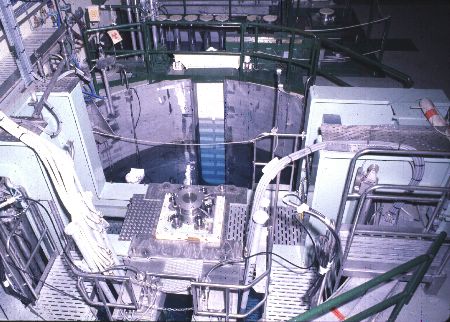Reactors for safety research purposes
A nuclear power plant, like many other industrial equipment facilities (railroad, airplanes, space shuttles, automobile,…), is designed to operate in a given field (speed, loading …).
Nevertheless, the plant must be able to “stand” deviations to the normal operating characteristics without consequences for the users or the surrounding environment.
And the nuclear plant is designed, and dimensioned, with this in mind.
Research reactors dedicated to safety-related research are used to study the consequences of certain accidental situations on the behaviour of the fuels used in the nuclear plants: these are called design basis accidents.
The CABRI reactor reproduces two of these deviations from normal reactor operations:
- Power peaks : RIA (Reactivity Initiated Accident) type accident
- Localized loss of the coolant which cools the nuclear fuel : accident of the type LOCA (Loss Of Coolant Accident)
At the Phébus reactor, the tests focus on causing and studying all the way to the meltdown of a specimen of approximately twenty fuel rods. This degradation can occur after a PWR primary cooling circuit rupture.
This involves visualising the behaviour of the fuel when these accidents are reproduced. The information collected, and the analysis of this information makes it possible to verify the design, at full-scale, of the fuel rod or pin, to determine the limits to normal operations by establishing safety margins, to gain feedback on the design of the fuel and to validate the models used to calculate accidents.

